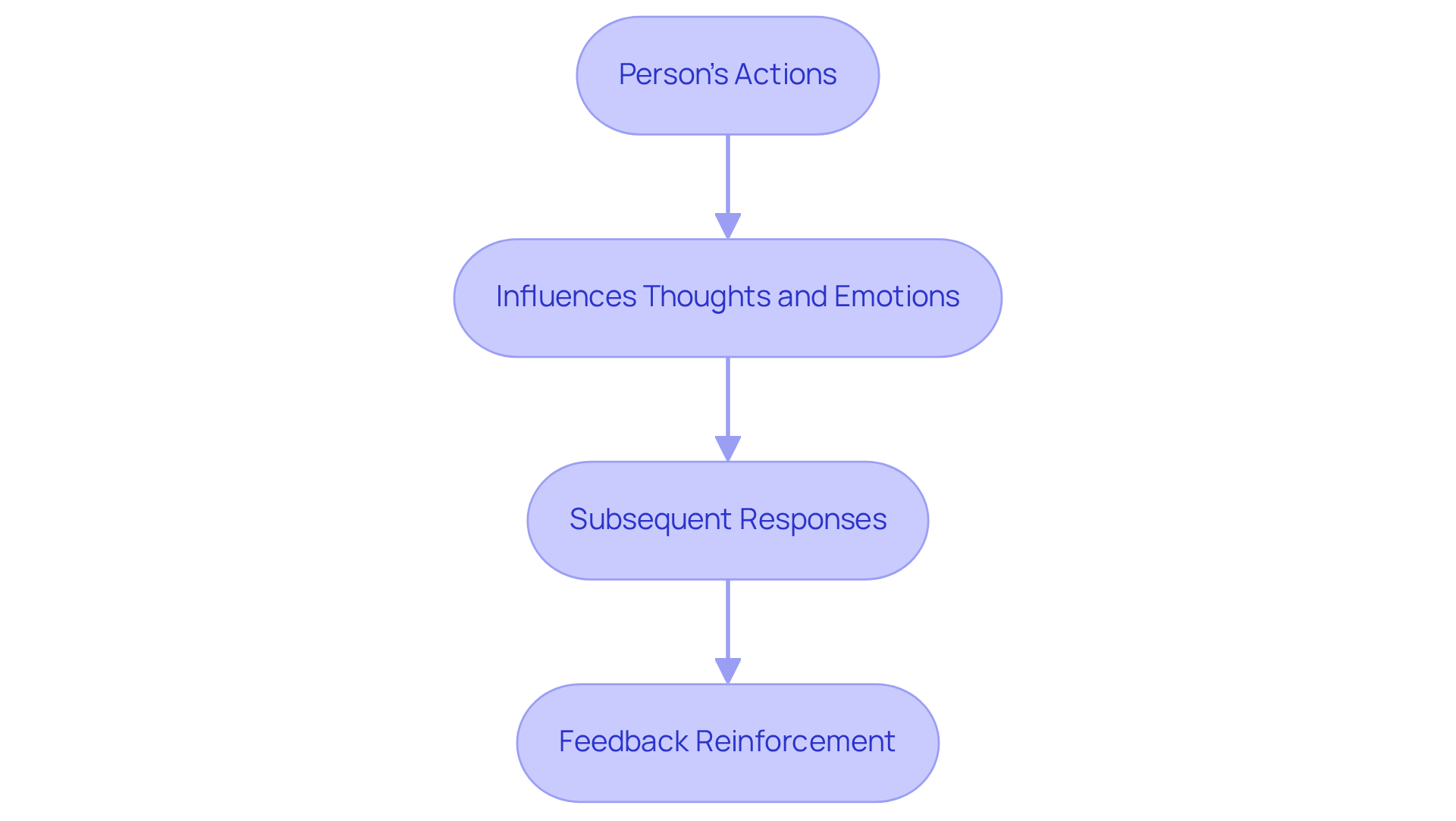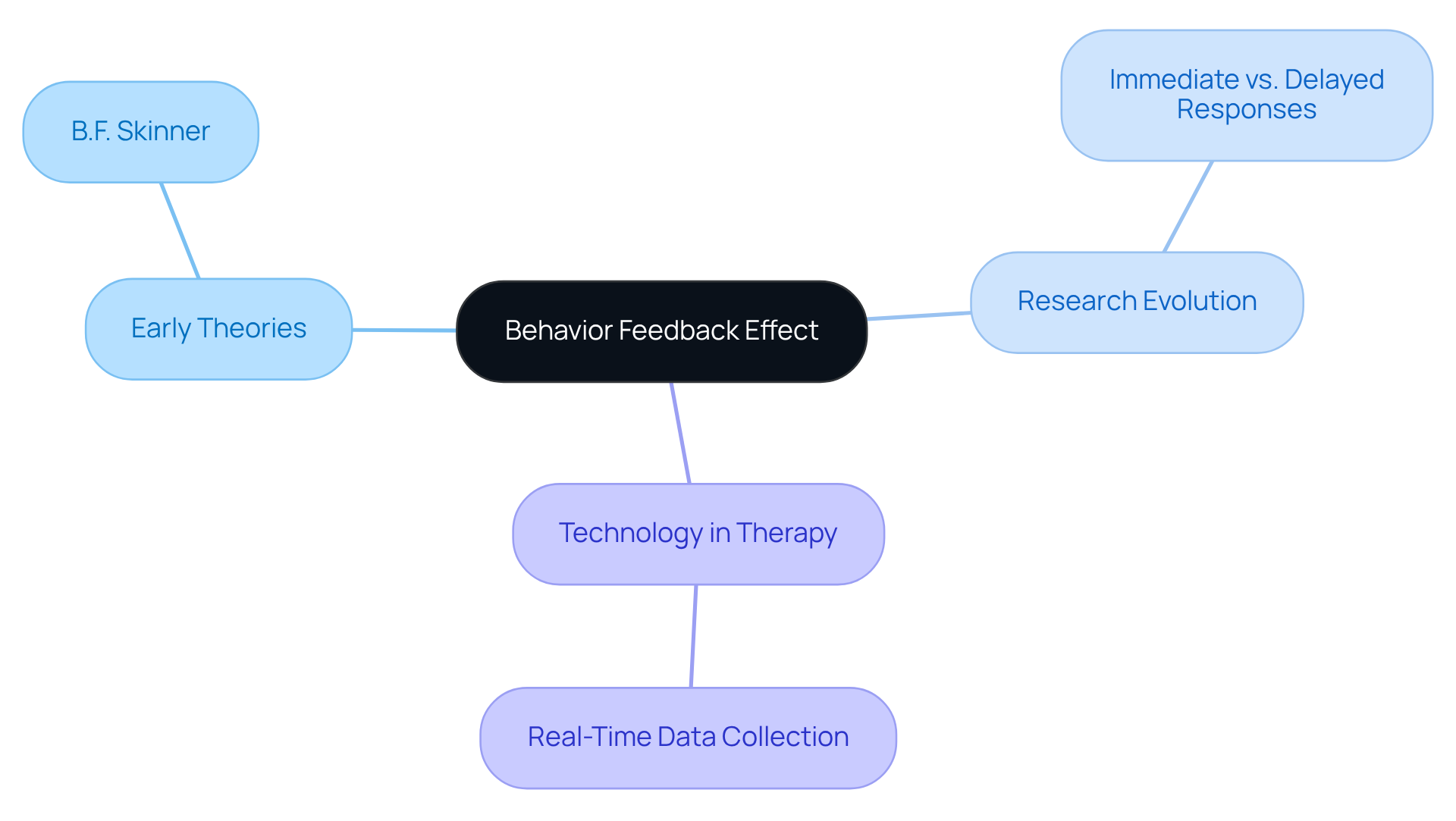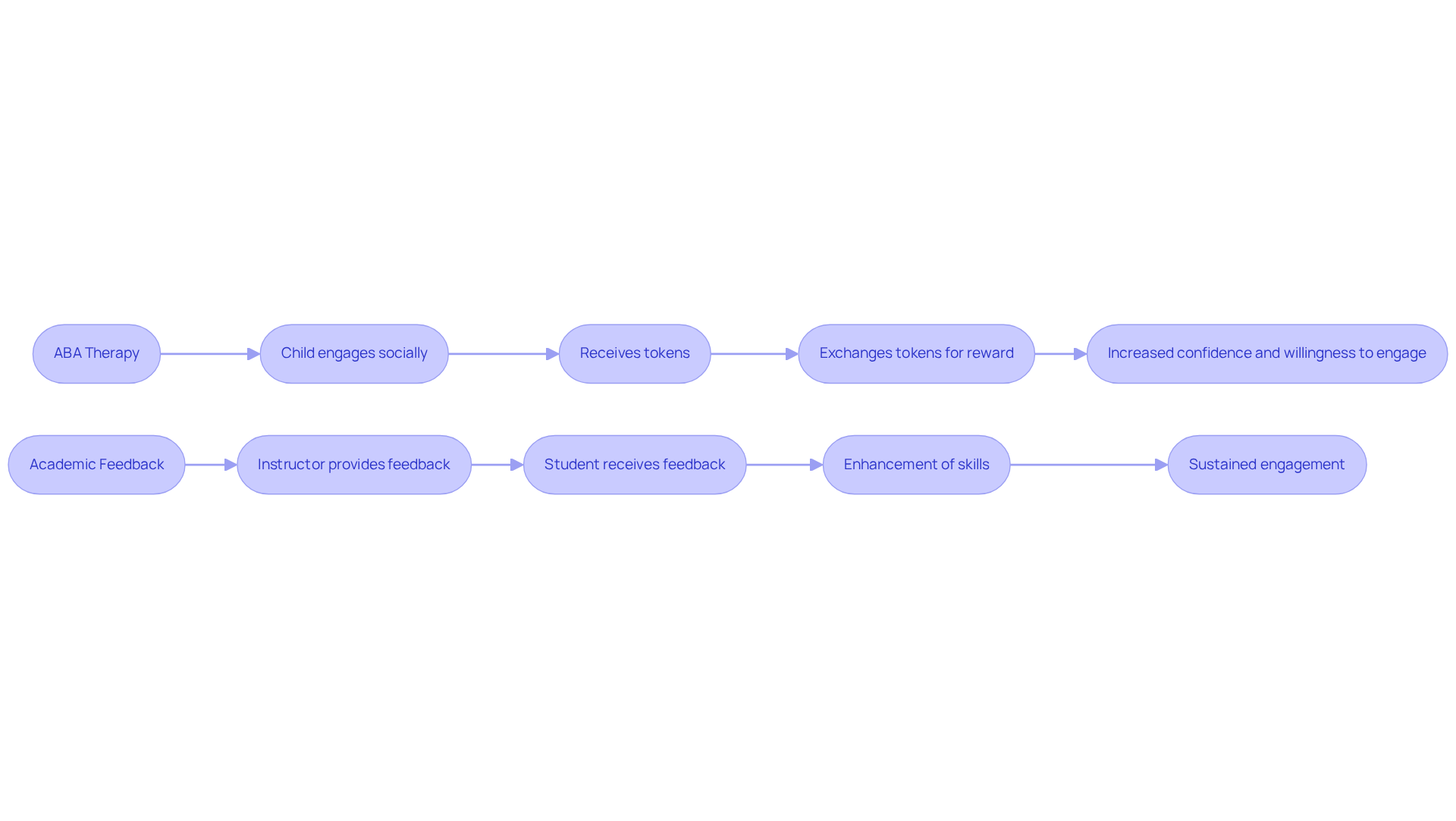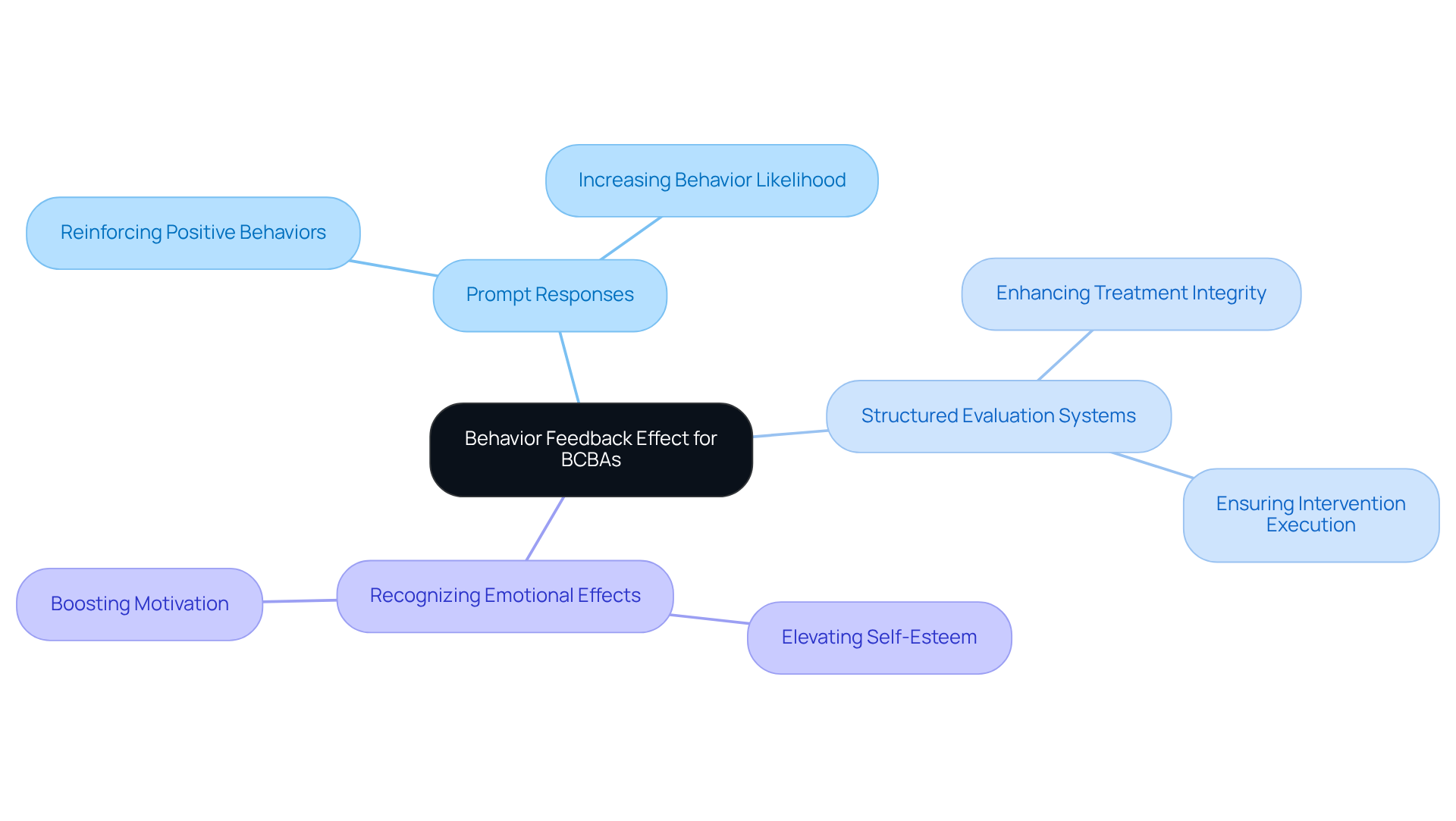September 24, 2025

The Behavior Feedback Effect in ABA therapy is a pivotal process where a person's actions significantly influence their thoughts, emotions, and subsequent responses. This effect underscores the critical role of feedback in reinforcing behaviors. Consider how positive reinforcement, particularly immediate feedback in therapeutic settings, not only encourages desired behaviors but also enhances emotional states. This dual benefit ultimately leads to improved learning outcomes for clients.
Reflect on your current hiring challenges. Are you maximizing the potential of your recruitment strategies? The integration of effective feedback mechanisms can transform not just individual behaviors, but also overall therapeutic effectiveness. By focusing on the Behavior Feedback Effect, practitioners can create a more responsive and adaptive learning environment.
In summary, understanding and applying the Behavior Feedback Effect is essential for professionals in ABA therapy. It not only fosters better client outcomes but also elevates the practice as a whole. Embrace this knowledge to enhance your therapeutic approach and drive success in your practice.
Understanding the nuances of human behavior is not just important; it is a cornerstone of effective therapy, particularly within Applied Behavior Analysis (ABA). The Behavior Feedback Effect reveals a profound truth: actions shape thoughts and emotions, ultimately influencing therapeutic outcomes. As behavior analysts delve into this phenomenon, they may ponder a critical question: how can harnessing this effect transform the design and implementation of interventions? Exploring this question uncovers the significance of feedback in therapeutic settings and highlights practical strategies that can enhance clients' learning experiences.
The Behavior Feedback Effect denotes the phenomenon where a person's actions influence their thoughts, emotions, and subsequent responses. In the context of ABA therapy, the behavior feedback effect is crucial as it emphasizes the significance of feedback in influencing actions. Feedback acts as a reinforcement system, directing individuals toward preferred actions while also altering their emotional reactions.
For instance, when a child receives positive reinforcement for a specific behavior, it not only encourages the repetition of that behavior but also enhances their emotional state, fostering a positive learning environment. Understanding the behavior feedback effect is essential for behavior analysts, as it directly impacts the effectiveness of their interventions and the overall therapeutic outcomes.
Dr. Temple Grandin's assertion, "Different, not less," emphasizes the importance of recognizing the unique strengths of individuals with Autism, aligning with the concept of neurodiversity. Moreover, the Support Hub provides resources like Social Skills Task Boxes, which offer practical applications of input in real-world situations, assisting students in cultivating vital social skills.
By utilizing input efficiently, BCBAs can improve the learning experiences of their clients, ultimately resulting in more substantial changes in actions.

The significance of reinforcement in learning is underscored by the Behavior Feedback Effect, which is rooted in early behaviorist theories. Pioneers like B.F. Skinner laid the groundwork by demonstrating how responses can modify behavior through reinforcement schedules.
As research has evolved, it has expanded to include various forms of input, such as immediate versus delayed responses, and their distinct influences on learning outcomes. The integration of technology in therapy has propelled the use of responses further, facilitating real-time data collection and assessment, which enhances the precision of interventions.
Grasping this historical context is crucial for BCBAs; it not only informs their practice but also equips them to effectively apply the behavior feedback effect in their therapeutic methodologies.

In practice, the behavior feedback effect manifests in various scenarios within ABA therapy. For instance, a BCBA working with a child with autism may implement a token economy system where the child earns tokens for demonstrating appropriate social interactions. Each time the child positively engages with peers, they receive immediate reinforcement in the form of tokens, which can be exchanged for a reward. This approach not only reinforces the desired behavior but also enhances the child's confidence and willingness to engage socially.
Additionally, in academic settings, instructors provide prompt feedback to students regarding their performance. Research indicates that students receiving timely feedback are more likely to enhance their skills and sustain engagement in learning activities.
These examples underscore the practical implications of the behavior feedback effect in improving behavioral outcomes.

The implications of the behavior feedback effect for behavior analysts are profound. Understanding how responses influence actions empowers Board Certified Behavior Analysts to devise strategies that are both efficient and tailored to the unique needs of their clients.
For instance, behavior analysts can implement prompt responses to reinforce positive behaviors, thereby increasing the likelihood of those behaviors being repeated. Additionally, incorporating structured evaluation systems within treatment plans can enhance treatment integrity and ensure that interventions are executed as intended.
Furthermore, it is crucial for behavior analysts to recognize the emotional and psychological effects of feedback on clients, as positive feedback can significantly elevate self-esteem and motivation. By harnessing the behavior feedback effect, BCBAs can cultivate more engaging and effective therapeutic environments that foster lasting behavioral change.

The exploration of the Behavior Feedback Effect in ABA therapy reveals its pivotal role in shaping not only actions but also thoughts and emotions. This phenomenon underscores the importance of feedback as a reinforcement mechanism, guiding individuals toward preferred behaviors while simultaneously enhancing their emotional well-being. Recognizing this effect is essential for behavior analysts, as it directly influences the effectiveness of their interventions and the overall therapeutic outcomes.
Key insights throughout the article highlight the historical context of the Behavior Feedback Effect, showcasing how foundational theories have informed current practices in ABA therapy. Real-world examples, such as token economies and prompt feedback in educational settings, illustrate its practical implications, demonstrating how timely and positive reinforcement can significantly enhance confidence and engagement in individuals. Understanding the emotional dimensions of feedback empowers Board Certified Behavior Analysts to create more tailored and effective treatment plans.
Ultimately, the significance of the Behavior Feedback Effect extends beyond mere behavioral outcomes; it fosters a deeper understanding of the emotional and psychological impacts of feedback on clients. By embracing this knowledge, behavior analysts can cultivate therapeutic environments that not only promote skill acquisition but also nurture self-esteem and motivation. This holistic approach to therapy is crucial for driving meaningful and lasting change in the lives of those they serve.
What is the Behavior Feedback Effect in ABA therapy?
The Behavior Feedback Effect refers to the phenomenon where a person's actions influence their thoughts, emotions, and subsequent responses. In ABA therapy, it highlights the importance of feedback in shaping actions.
How does feedback function in the context of the Behavior Feedback Effect?
Feedback acts as a reinforcement system that guides individuals toward preferred actions while also modifying their emotional reactions, thereby enhancing the overall learning experience.
Can you provide an example of the Behavior Feedback Effect?
An example is when a child receives positive reinforcement for a specific behavior, which not only encourages them to repeat that behavior but also improves their emotional state, creating a positive learning environment.
Why is understanding the Behavior Feedback Effect important for behavior analysts?
Understanding the Behavior Feedback Effect is crucial for behavior analysts as it directly impacts the effectiveness of their interventions and the overall therapeutic outcomes.
What does Dr. Temple Grandin's quote "Different, not less" signify in relation to the Behavior Feedback Effect?
Dr. Temple Grandin's quote emphasizes the importance of recognizing the unique strengths of individuals with Autism, aligning with the concept of neurodiversity, which is relevant to the understanding of behavior and feedback in therapy.
What resources does the Support Hub provide to assist with social skills development?
The Support Hub offers resources like Social Skills Task Boxes, which provide practical applications of input in real-world situations to help students cultivate vital social skills.
How can BCBAs improve the learning experiences of their clients?
By utilizing input efficiently, Board Certified Behavior Analysts (BCBAs) can enhance the learning experiences of their clients, leading to more substantial changes in their actions.
Our expert recruitment strategies and AI-driven sourcing ensure that you receive top-notch candidates quickly, without compromising on quality. Whether you’re looking for BCBAs, Clinical Directors, or RBTs, we’ve got you covered.